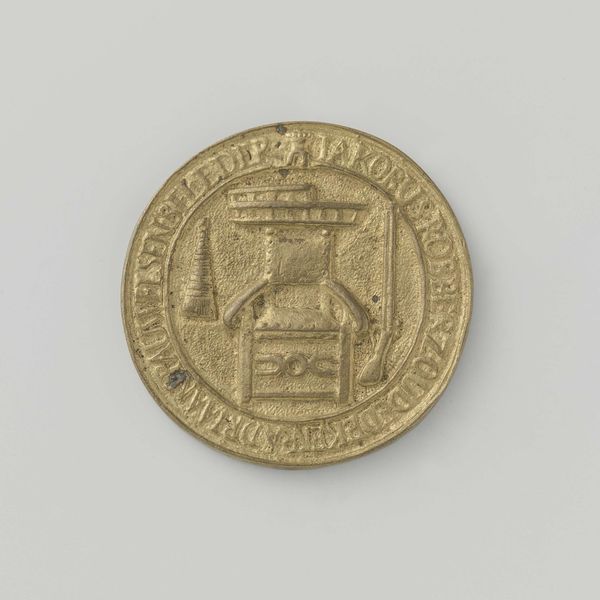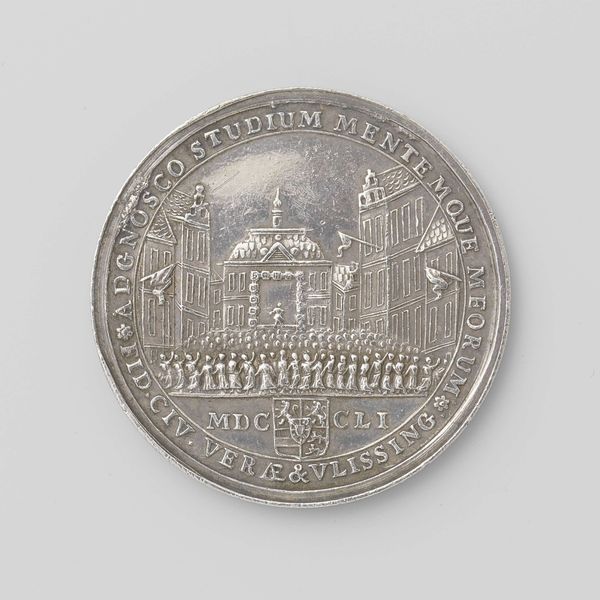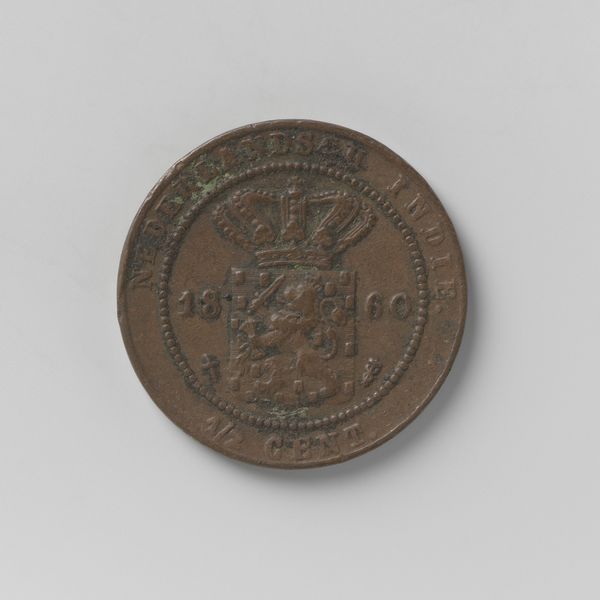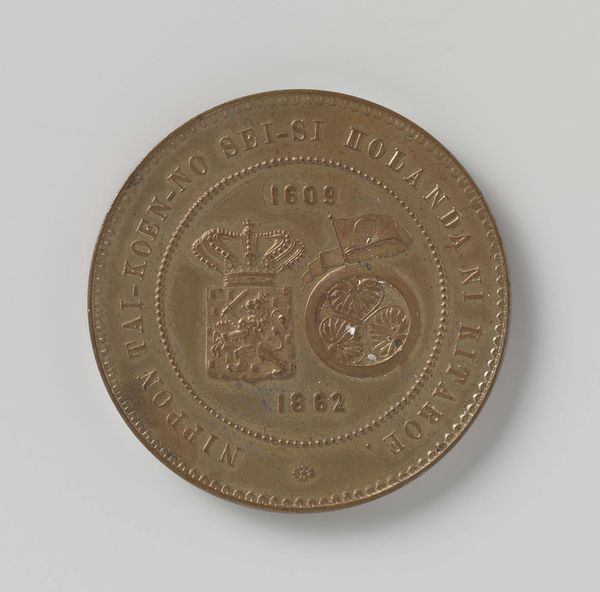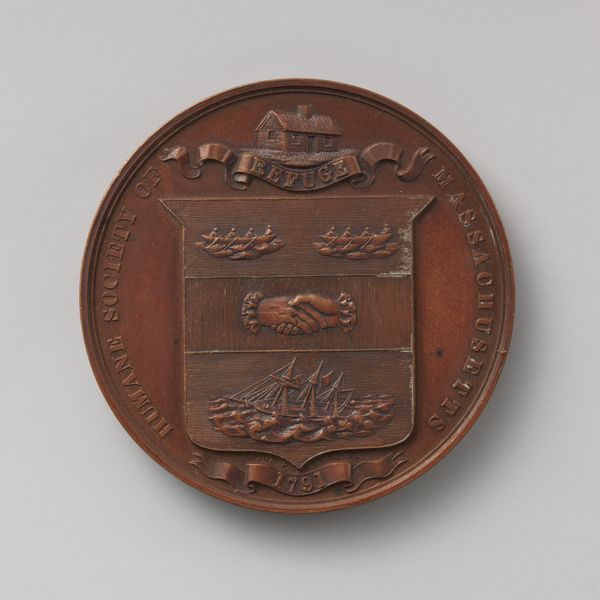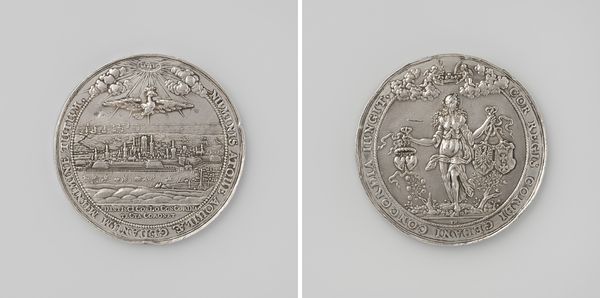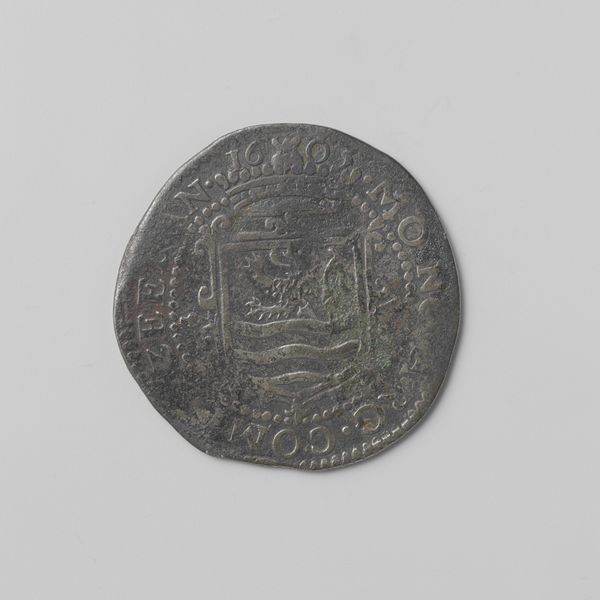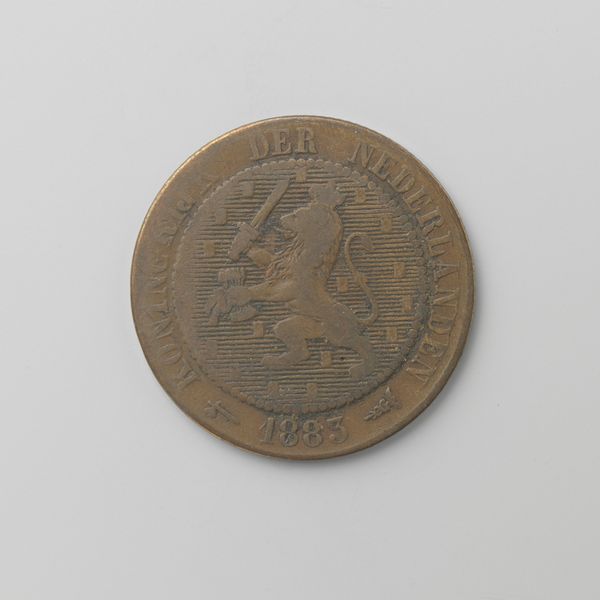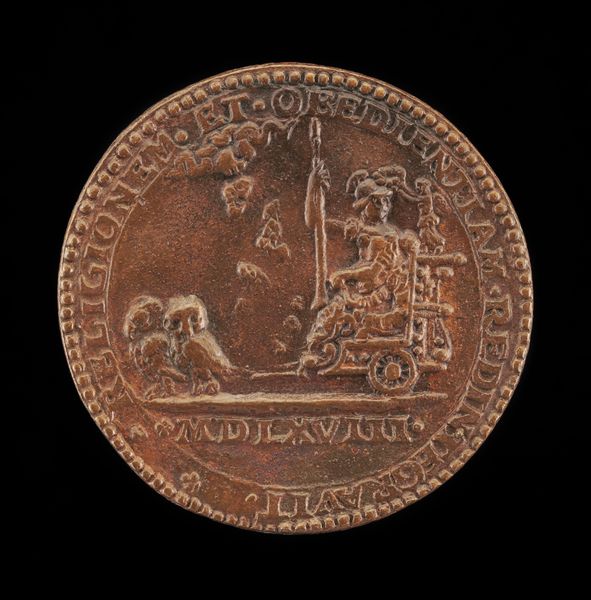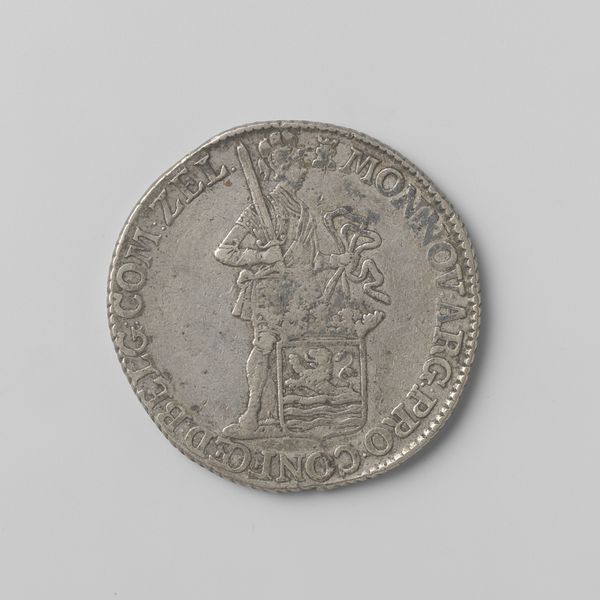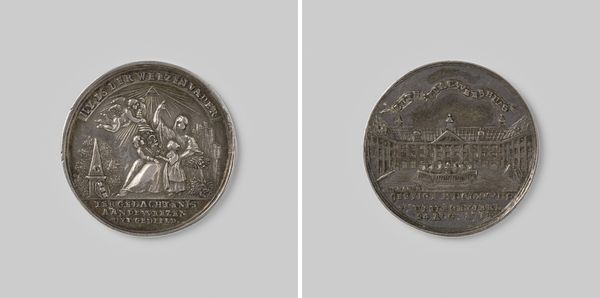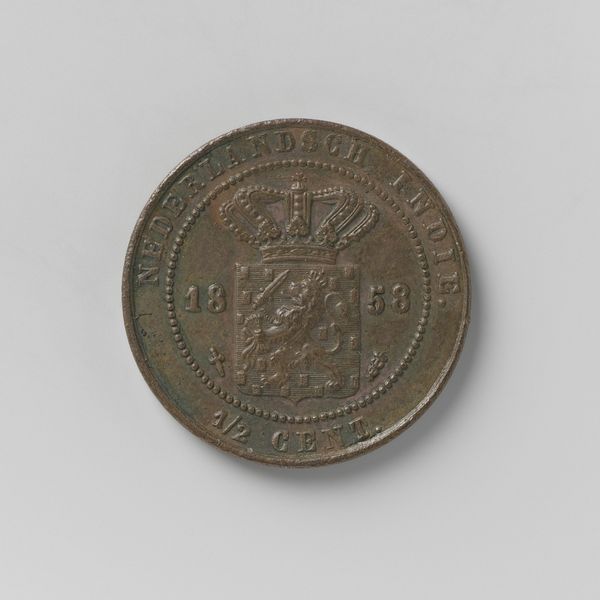
metal, relief, bronze, engraving
#
medieval
#
dutch-golden-age
#
metal
#
relief
#
bronze
#
genre-painting
#
engraving
#
statue
Dimensions: diameter 5.6 cm, weight 40.39 gr
Copyright: Rijks Museum: Open Domain
Curator: The bronze relief you’re looking at is a guild badge, specifically, “Koks- en pasteibakkersgilde van Middelburg, gildepenning met no. 7,” created in 1653. The artist, whose name is lost to us, was working in the Dutch Golden Age. Editor: It has an immediate visual appeal! It’s small, obviously meant to be held, but that density of imagery – the figures, the tools, everything compacted in the round is evocative. It almost has the quality of a secret token. Curator: Absolutely. Guild badges were essentially the ID cards of their time. The depiction shows bakers actively working, one near a hearth perhaps stoking coals, the other serving at a table filled with food and drink, it's such a glimpse into the culinary practices of the time. We see more than a craft; we witness social and communal rituals. Editor: What is interesting is the implied class status conferred to workers from that guild, that by belonging to the guild and owning its metal badge, one also belonged to the cultural elite and had status within their community. It served both practical and symbolic purposes, solidifying group identity and visually proclaiming the baker’s affiliation, right? The iconography projects economic power as much as group membership. Curator: Precisely. And the style contributes to the messaging. The piece exhibits characteristics consistent with a time of scientific advancements that placed humanity at its forefront. Look at the detail and composition, there is naturalism alongside allegory. We are witness to both reality and idealism. Editor: Thinking about where this badge would be worn—displayed on clothing, presumably— it strikes me as an early form of branded content, projecting authority and promising a level of quality and consistency in the baker’s work. The cultural memory tied into food preparations, I think, adds even greater significance. Curator: Indeed. These aren’t just pictures but markers loaded with the emotional and historical significance of both individual and collective experiences. It shows us how craftspeople asserted themselves into their era’s political landscape and reminds us that the past’s symbols continuously influence the present's visual vocabulary. Editor: It's really quite remarkable how such a seemingly simple object can reveal so much about the history of labor and community. The tangible presence of cultural heritage is so apparent here, no? Curator: That is absolutely the lasting allure; to perceive tangible traces of lives gone by.
Comments
No comments
Be the first to comment and join the conversation on the ultimate creative platform.
